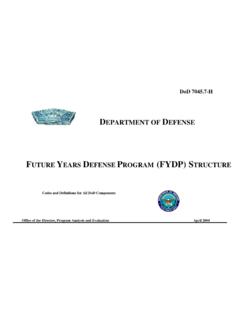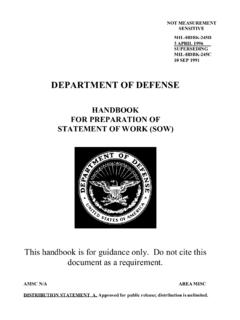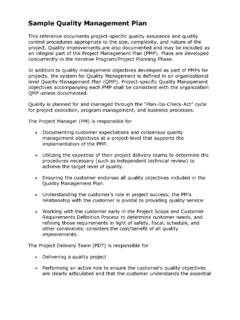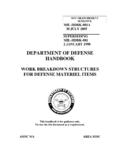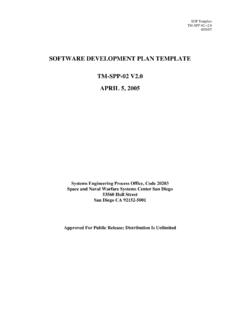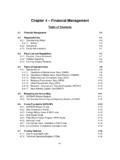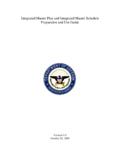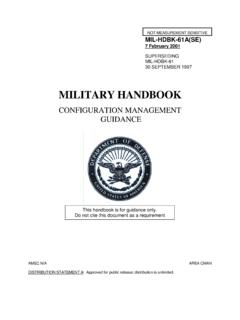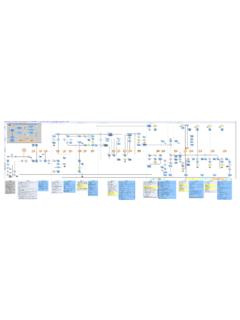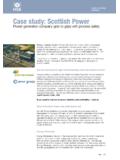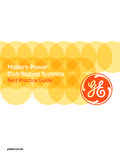Transcription of Risk Assessment Worksheet and Management Plan
1 Risk Assessment Worksheet and Management plan Form Page 1 of 12 Customer/Project Name: The Basics There are four steps to assessing and managing risks , and effective risk Management requires all four of them. 1. Identify the risks 2. Qualify the risks a. Assess each risk for impact to the project if it does occur b. Assess the likelihood of the risk occurrence 3. plan for risks by creating a watchlist of risk triggers and how to handle the risk if it does occur 4. Monitor and manage risks To adequately analyze risk, you'll need a detailed plan . So, the best time to perform an initial risk analysis is just prior to starting the project.
2 Don't make the mistake of thinking that risk analysis is a one-time task. You'll want to reevaluate the risk Management plan and your risk analysis from time to time throughout the project and whenever major deviations from the plan occur. Identify risks There are numerous ways to identify risks . If you have a limited amount of time, the best ways to identify risks are to: Review the following project risk Assessment Review the project schedule task list looking for: Tasks for which your team has no expertise. The duration and cost estimates for these tasks are more likely to be inaccurate. Duration and cost estimates that are aggressive.
3 Ask the estimators how confident they are in their estimates, especially for critical path tasks. Situations where you have a limited number of resources that can do particular tasks and where those resources are fully allocated, over allocated, or may become unavailable. A resource can become unavailable when it leaves your organization or because of other commitments within the organization. Tasks with several predecessors. The more dependencies a task has, the greater the likelihood of a delay. Tasks with long durations or a lot of resources. The estimates for these larger tasks are more likely to be inaccurate Brainstorm and talk with the experts All of your project risks may not be apparent from analyzing the project schedule.
4 It's worth your time to call a brainstorming meeting with key project resources and ask where they see the most risk to the project. You may be surprised at what you uncover. If you have some experienced project managers available, have them review your schedule. Also, talk with people who have expertise in particular areas of the project. For example, if you're planning to use an outside contractor, talk to people who have used that contractor or other contractors. Qualify risks As you go through the following risk analysis, you will be asked to qualify the risk probability and impact in terms of Low, Medium, and High.
5 Qualifying risks is a discipline unto itself and the accuracy of your results is commensurate with the techniques you use and your historical experience with risk analysis. Before you begin any qualification analysis, you will want to determine your organization s tolerance to risk. Can the organization operate in a high-risk environment or are they conservative and want only low-risk projects? If you work for a small company, an additional project cost of $250,000 or a delay of two 2 months may put your entire company at risk. If you work for a large organization, these overruns may be acceptable for a project.
6 How much cost and delay is acceptable? Remember that this isn't your preference; it's just the bottom-line numbers you can tolerate. Determine and write down the company s risk tolerance. Next, you will want to qualify each risk item by asking: What is the impact to the project if the risk item occurs (Low, Medium, High)? What is the probability or likelihood of the risk item occurring (Low, Medium, High)? o Review archived projects to see if similar tasks from the past have taken longer than your estimates or Risk Assessment Worksheet and Management plan Form Page 2 of 12 have cost more.
7 O Find out your team's confidence level. If the resources that will do the work aren't comfortable with your cost or duration estimates, then the risk is more likely to occur. Once the impact and probability has been determined, you will want to prioritize which risks are going to be actively managed focusing on the following order in priority (you might want to modify this priority table according to your organization s sensitivities): IMPACT High Medium Low High 1 1 2 Medium2 3 4 P R O B A B I L I T Y Low 4 5 6 Managing risks Once you've identified and qualified the risks , you need to plan to manage them.
8 Because risk planning can take a lot of time and energy, you may want to plan for only the high-priority risks (priority 1) or the medium to high-priority risks (priorities 1 to 3). Planning entails: Identifying triggers for each risk Identifying the plan for each risk Identify Triggers Triggers are indicators that a risk has occurred or is about to occur. The best triggers tell you well in advance that a problem will occur. To identify triggers, talk with the people who are most likely to cause the risk to occur and those who are most likely to feel its impact. Ask them how they would know that the problem is occurring.
9 Start with how they would know that the problem has already occurred, and then work backward to determine how they would know before the problem actually occurred. As the project manager, consider how the risk would be reflected in the project schedule. Would the project schedule show overtime for a specific resource on earlier tasks? Would the project schedule show delays in specific tasks? For each risk you're addressing, create a watchlist that shows the possible triggers, when they are likely to occur, and who should watch for the trigger. Identify Plans Once you've identified triggers and created your watchlist, you need to create action plans to manage your risks .
10 You can choose to manage risks in one of four basic ways: Avoidance You can change the project plan and project schedule to eliminate the risk or to protect the project objectives from its impact. More in-depth planning or requirements gathering may be one way to avoid a risk later in a project. Reducing scope to avoid high-risk activities, adding resources, or adding time may be other ways to avoid risk. For example, if you're dependent on a single resource with specific expertise, consider training another resource in that expertise. Transference Risk transference is seeking to shift the consequence of a risk to a third party together with the ownership of the response.
